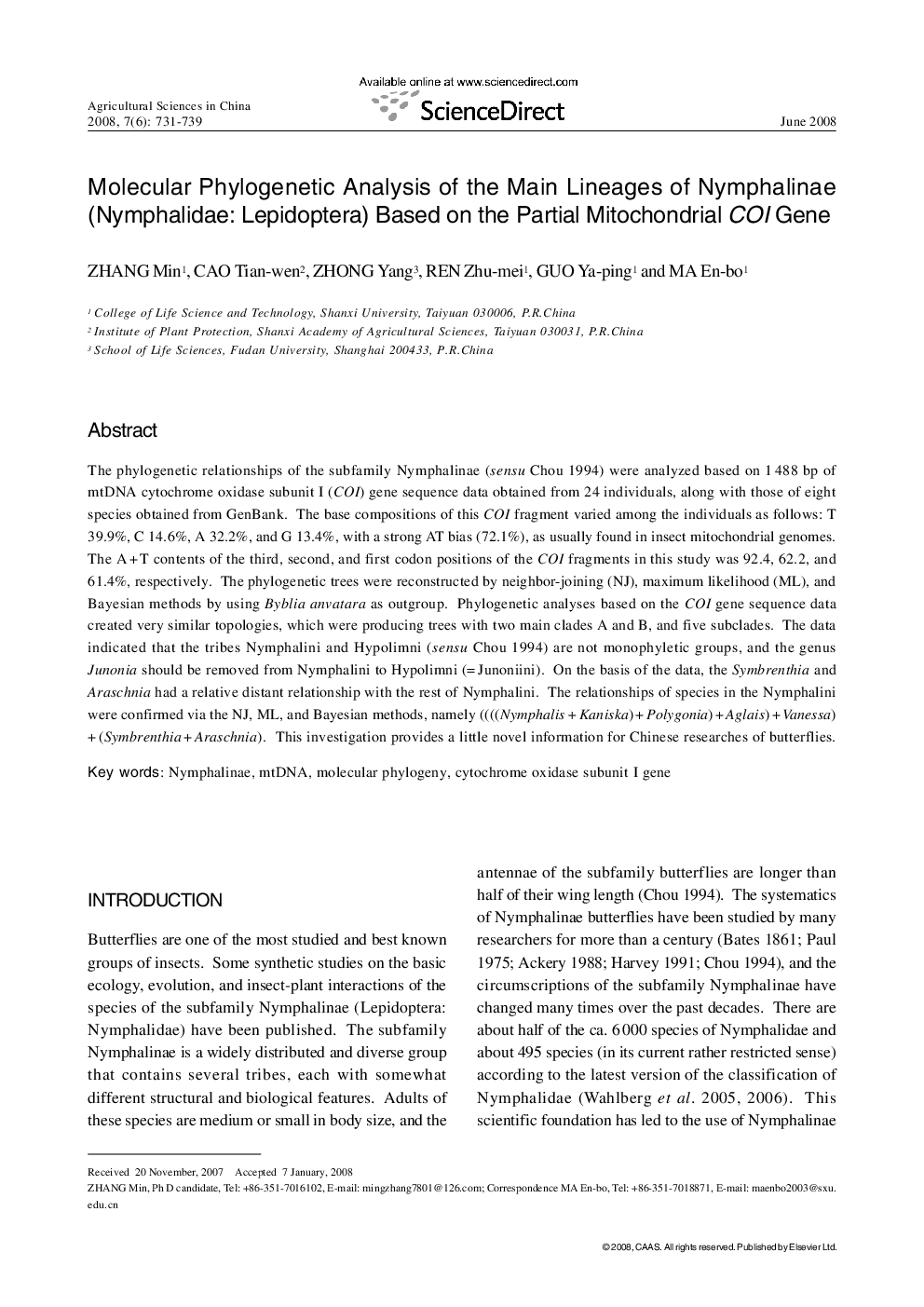| Article ID | Journal | Published Year | Pages | File Type |
|---|---|---|---|---|
| 4490589 | Agricultural Sciences in China | 2008 | 9 Pages |
The phylogenetic relationships of the subfamily Nymphalinae (sensu Chou 1994) were analyzed based on 1 488 bp of mtDNA cytochrome oxidase subunit I (COI) gene sequence data obtained from 24 individuals, along with those of eight species obtained from GenBank. The base compositions of this COI fragment varied among the individuals as follows: T 39.9%, C 14.6%, A 32.2%, and G 13.4%, with a strong AT bias (72.1%), as usually found in insect mitochondrial genomes. The A + T contents of the third, second, and first codon positions of the COI fragments in this study was 92.4, 62.2, and 61.4%, respectively. The phylogenetic trees were reconstructed by neighbor-joining (NJ), maximum likelihood (ML), and Bayesian methods by using Byblia anvatara as outgroup. Phylogenetic analyses based on the COI gene sequence data created very similar topologies, which were producing trees with two main clades A and B, and five subclades. The data indicated that the tribes Nymphalini and Hypolimni (sensu Chou 1994) are not monophyletic groups, and the genus Junonia should be removed from Nymphalini to Hypolimni (= Junoniini). On the basis of the data, the Symbrenthia and Araschnia had a relative distant relationship with the rest of Nymphalini. The relationships of species in the Nymphalini were confirmed via the NJ, ML, and Bayesian methods, namely ((((Nymphalis + Kaniska) + Polygonia) + Aglais) + Vanessa) + (Symbrenthia + Araschnia). This investigation provides a little novel information for Chinese researches of butterflies.
